#14th c bce
Text
❦︎♕︎ Royalty asteroids that are prominent in my astrology natal chart ♕︎❦︎
By : Brielledoesastrology (tumblr)
༄༄༄༄༄༄༄༄༄༄༄༄༄༄༄༄༄༄༄༄༄༄༄༄༄༄༄༄


༄༄༄༄༄༄༄༄༄༄༄༄༄༄༄༄༄༄༄༄༄༄༄༄༄༄༄༄
asteroid Sejong (7365) conjunct my sun (1 orb)
this asteroid is named after King Sejong the great,
His greatest achievement was creating Hangul, the Korean alphabet, but his patronage of science, technology, literature, and medicine all had a large impact on Korea and Koreans. King Sejong is known as one of the greatest rulers of Korea of all time, as he created Hangul (Korean alphabet), encouraged significant scientific advancements, reinforced Confucianism in Korea, and caused many political and social advancements. Sejong, (born 1397—died 1450), monarch of the Chosŏn (Yi) dynasty during his reign (1419–50) cultural achievements in Korea reached their highest point.
asteroid hatshepsut (2436) conjunct my sun (1 orb)
This asteroid is named after the female pharaoh Hatshepsut. Considered one of Egypt's greatest female pharaoh brought great wealth and artistry to her land. She sponsored one of Egypt's most successful trading expeditions, bringing back gold, ebony, and incense from a place called Punt (probably modern-day Eritrea, a country in Africa).
asteroid Carolus Quartus (16951) conjunct my sun (1 orb)
This asteroid is named after Charles IV, Holy Roman Emperor. He is considered the greatest czech of all time. The 14th century – particularly the reign of Charles IV (1342–78) is considered the Golden Age of Czech history. He gained more through diplomacy than others did by war, and through purchases, marriages, and inheritance as he enlarged his dynastic power.
asteroid Vaclav (8740) conjunct my sun (2 orb)
This asteroid is named after Wenceslaus I, Duke of Bohemia. It's hard to find stories about him but all i know is that he is known for being "Good" and people make famous songs about him. Oh yeah uh also his evil brother killed him too..
asteroid Reyes (14684) conjunct my sun (1 orb)
"Reyes" or "Rey" means "Kings" or "King" in Spanish.
asteroid Koniq (3815) conjunct my mercury (1 orb)
"Koniq" means "King" in German.
Update:
asteroid Zoser (4907) conjunct my sun (2 orb)
This asteroid is named after the pharaoh Djoser. Djoser, also spelled Zoser, second king of the 3rd dynasty (c. 2650–c. 2575 bce) of ancient Egypt, who undertook the construction of the earliest important stone building in Egypt. His reign, which probably lasted 19 years, was marked by great technological innovation in the use of stone architecture. King Djoser's architect, Imhotep, built the first pyramid by placing six mastabas, each smaller than the one beneath, in a stack to form a pyramid rising in steps.
#astrology#astro notes#astro observations#astrology observations#astro community#astrology notes#zodiac#gemini#aquarius#astroblr#tarotblr#witchblr#astrology blogs#astrology community#astrology asteroids#asteroids astrology observation#asteroids in astrology#asteroids astrology#brielledoesastrology#royal asteroids#asteroids named after royalty#royal astrology
205 notes
·
View notes
Photo

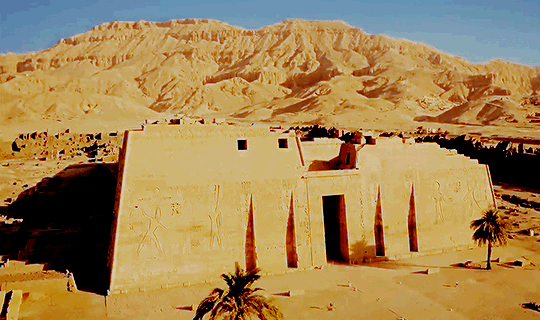
“The Arabic name Medinet Habu (“City of Habu”) was thought to reflect the site's more ancient connection with Amenhotep, the son of Hapu, a respected sage of the 14th century BCE, later deified, whose memorial temple was immediately to the north. No trace of this association has come down from ancient times, however, as the site's formal name in Egyptian was either Djeme, “Males and Mothers”— originally with reference to the eight primeval deities, or Ogdoad, whom the ancients believed to be buried there — although the name continued to be used by the site's later Christian inhabitants.
Medinet Habu's most conspicuous standing monument is the great memorial temple of Ramesses III (reign 1198–1166 BCE). On the grounds of this complex, however, are numerous other structures, most notably the so-called small temple (built in stages, from the mid 18th Dynasty until the second century CE) and the memorial chapels of the divine votaresses of Amun (25th Dynasty and 26th).
Among other ancient buildings at the site, but less well preserved, is the memorial temple of King Horemheb (reign 1343–1315 BCE), usurped from his predecessor Ay (reign 1346–1343 BCE), which abuts Ramesses III's enclosure on its northern side. To its east are a number of tomb chapels made for high officials of the later New Kingdom.
Most abundantly on the enclosure wall of Ramesses III's temple are the remnants of later mud-brick houses — from the town that engulfed the site beginning in the 11th century BCE until the site was abandoned in the 9th century CE. Reuse of Ramesses III's temple was made especially apparent by the decorated doorways that were cut into its northern outer wall during early Christian times, when the Holy Church of Djeme occupied the building's second court.
The great temple of Ramesses III was called the Mansion of Millions of Years of King Usermare-Maiamun; ‘United with Eternity in the Estate of Amun on the West of Thebes.’ The precinct, 210m × 315m, was entered by two stone gates in the mud-brick enclosure wall, on the eastern and the western sides. The western gate — presumably the normal entrance for employees who lived outside the precinct — was destroyed when the temple was besieged in a civil war, during the reign of Ramesses XI (c. 1096 BCE). The eastern entrance, approached by a canal, terminated in a harbour, from which important visitors and statues could enter the temple.”
SOURCE: William J. Murnane, The Oxford Encyclopedia of Ancient Egypt (2001)
#egypt#ancient egypt#egyptology#archaeology#historyedit#mine#my edit#medinet habu#20th dynasty#new kingdom#thebes#waset#luxor#ramesses iii
176 notes
·
View notes
Photo

Indus Valley Etched Carnelian Pendant Necklace, c. 13th-14th century BCE
71 notes
·
View notes
Text

Clay figure of a Bull, Mycenaean settlement at Dimini (c. 14th century BCE)
On displat at the Athanasakio Archaeological Museum of Volos (Volos, Greece)
#isaac.jpg#archaeology#classical archaeology#art#greek#athanasakio archaeological museum of volos#animal figures#mycenae#mycenaean greece
102 notes
·
View notes
Photo
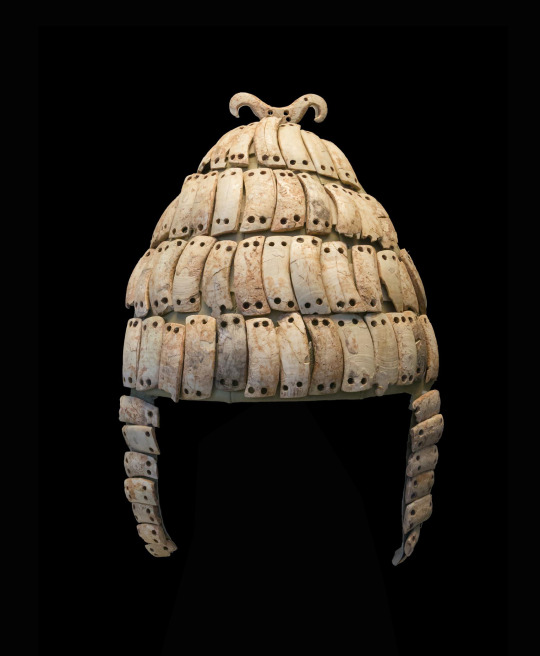





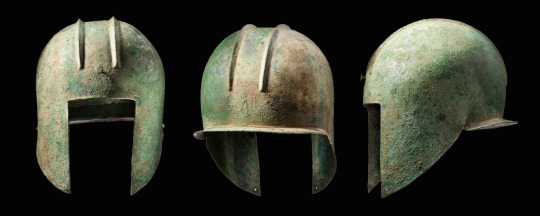

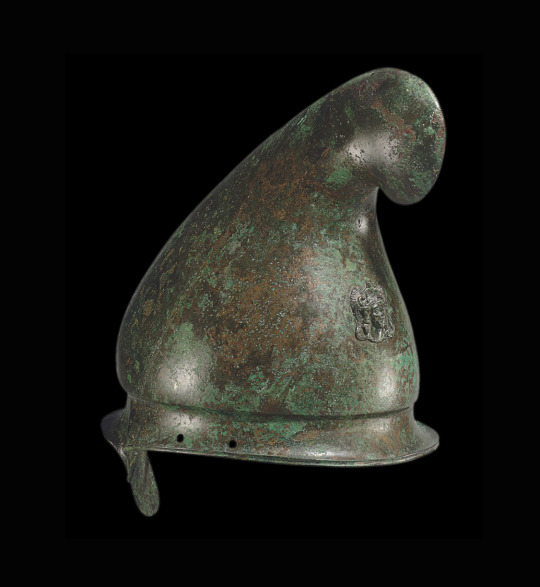
Bronze Age helmets
boar’s tusk helmet with cheek-guards and a double bone hook on top - Mycenae - c.14th-13th century BCE
Aegean or Balkan Helmet - 14th-13th century BCE
Urnfield Helmet - c.12th-11th century BCE
Urnfield Helmet - c.12th-7th century BCE
bronze Ogive-Shaped helmet - c.1000 BCE
Urnfield Comb Helmet - c.9th-8th century BCE
Illyrian helmet - type 3A, variant 3 - 2nd half of the 6th – 5th century BCE (three views)
Chalcidian Helmet - 4th century BCE
Phrygian Helmet - with Athena - 350-300 BCE
14 notes
·
View notes
Text

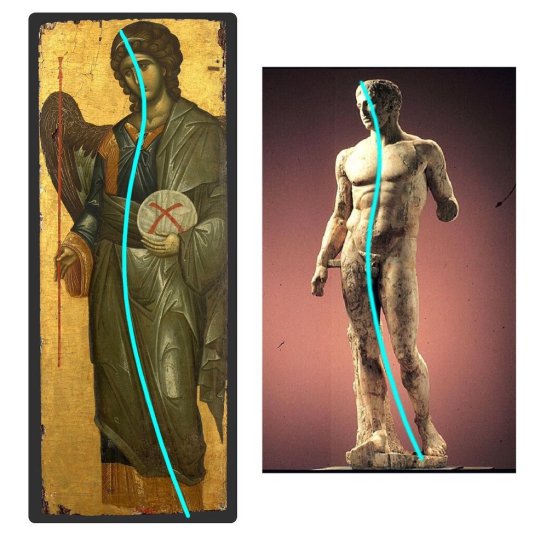
Left
Archangel Gabriel
👨🏻🎨 Unknown
🗓 14th c.
📍 Vatopedi Monastery, Mount Athos
Right
Doryphoros (Roman copy)
👨🏻🎨 Polykleitos
🗓 4th c. BCE (Original creation)
📍 Naples National Archaeological Museum
Ancient Greek and Late Byzantine art tend to avoid perfectly horizontal and vertical lines because they do not produce inner and outer relations -rhythm- and applied on a figure, they make it look stiff and unnatural; Instead, they always prefer diagonal axes. So, when they want to make a standing figure, they analyze the vertical line into diagonal movements that create something like a "Z"-like position -a practice that makes them look “alive” and much more dynamic.
👀 Extra fact:
The same principle applies to Jesus on the cross!
Full source and post (byzantinepainting on insta)!
13 notes
·
View notes
Photo

The Hittite Empire, 13th century BCE
A map illustrating the rise and expansion (c. 1750 - 1200 BCE) of the Hittites, ancient Anatolian people who spoke an Indo-European language. At its height around the mid-14th century BCE, the Hittite empire ruled most of Asia Minor from the northern Levant to Upper Mesopotamia. After c. 1180 BCE, during the Bronze Age Collapse, with increased pressure from the Kaska tribes and the arrival of the Sea Peoples, the empire came to a sudden violent end. It splintered into independent “Neo-Hittite” city-states, some of which survived well into the 8th century BCE.
75 notes
·
View notes
Text

Seated Hittite Goddess with Child, c. 14th - 13th Century BCE, from Central Anatolia
13 notes
·
View notes
Text
HISTORY OF TAMIL NADU
Name :Sanjith Y
Dep:B A HISTORY(EM)
REG NO:2121E0246
EMAIL ID: [email protected]
The history of Tamil Nadu is rich and diverse, spanning thousands of years. While it's challenging to cover its entire history in just 1000 words, I can provide a concise overview of key periods and developments.
1. **Ancient History (300 BCE - 300 CE):**
Tamil Nadu's history can be traced back to the Sangam period, characterized by the flourishing of Tamil literature. The Sangam texts, composed between 300 BCE and 300 CE, provide insights into the early Tamil society, culture, and politics.
2. **Medieval Period (7th - 14th Century):**
The Chola dynasty, one of the most prominent in Tamil Nadu's history, ruled during this time. They expanded their empire across South India and Southeast Asia. The Cholas made significant contributions to art, literature, and temple architecture.
3. **Vijayanagara Empire (14th - 17th Century):**
The Vijayanagara Empire, although not Tamil, influenced the region. They promoted the growth of the Tamil language and culture. Temples and grand architectural projects were undertaken during this period.
4. **Nayak and Maratha Rule (17th - 18th Century):**
After the decline of the Vijayanagara Empire, Tamil Nadu saw the rise of various Nayak dynasties and later, the Marathas. The Nayaks continued to promote Tamil culture and literature.
5. **British Colonial Rule (18th Century - 1947):**
The British East India Company established control over Tamil Nadu in the 18th century. The region played a crucial role in the Indian independence movement. Prominent leaders like C. Rajagopalachari and Periyar E.V. Ramasamy emerged during this period.
6. **Independence and Post-Independence Era (1947 - Present):**
India gained independence in 1947, and Tamil Nadu played a significant role in the formation of the Indian Republic. The state has been politically active, with the Dravidian movement advocating for regional autonomy and social reform.
7. **Cultural Heritage:**
Tamil Nadu has a rich cultural heritage, including classical dance forms like Bharatanatyam, traditional music, and a vibrant literary tradition. Temples like the Brihadeeswarar Temple in Thanjavur and the Meenakshi Temple in Madurai are architectural marvels.
8. **Language and Literature:**
Tamil is one of the oldest surviving classical languages in the world. It has a vast body of literature, including the Sangam poetry, religious texts, and modern works by literary giants like Subramania Bharati and Kalki Krishnamurthy.
9. **Economy and Industrialization:**
Tamil Nadu has a diverse economy, with sectors like manufacturing, agriculture, and services playing crucial roles. The state has become an industrial hub with a focus on automotive manufacturing and information technology.
10. **Political Landscape:**
The state has been known for its dynamic and competitive politics. Dravidian parties, the DMK (Dravida Munnetra Kazhagam) and AIADMK (All India Anna Dravida Munnetra Kazhagam), have dominated the political scene. Key leaders include M.G. Ramachandran, M. Karunanidhi, and J. Jayalalithaa.
11. **Social Reforms:**
Tamil Nadu has a history of social reform movements, addressing issues like caste discrimination and women's rights. Figures like Periyar E.V. Ramasamy played pivotal roles in these movements.
12. **Education and Science:**
Tamil Nadu is known for its educational institutions like the Indian Institute of Technology (IIT) Madras and the Indian Institute of Management (IIM) Trichy. It has contributed significantly to fields such as science, technology, and healthcare.
13. **Cinema:**
The state is a hub for the Indian film industry, with the Tamil film industry, or "Kollywood," producing a vast number of films. Superstars like Rajinikanth and Kamal Haasan have gained international recognition.
14. **Recent Developments:**
Tamil Nadu has witnessed various infrastructural developments, including metro rail projects, and has continued to focus on economic growth and social welfare.
In summary, Tamil Nadu's history is a tapestry of ancient civilizations, colonial influence, political movements, cultural richness, and economic progress. Its legacy continues to shape the social, political, and cultural landscape of modern India.
2 notes
·
View notes
Photo
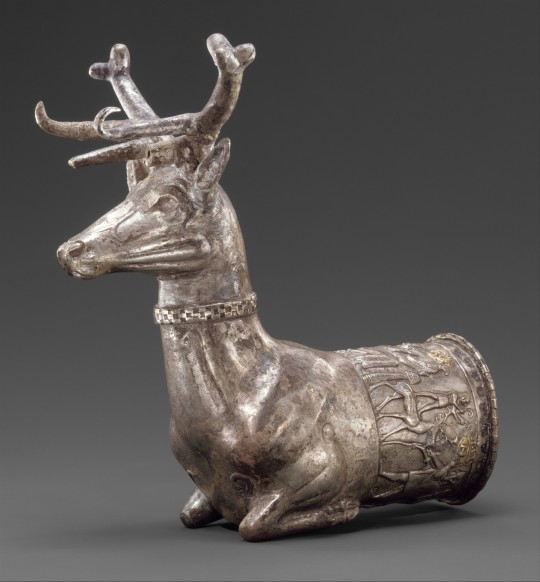


Vessel ending in the forepart of a stag, Hittite (central Anatolia), c. 14th-13th century BCE
#hittite#hittite empire#before common era#Turkey#stags#deer#silver#gold#metal#art#vessels#asia#anatolia
2 notes
·
View notes
Text
Egypt, The Hittites, Babylon, Mitanni, Assyria and Elam ~14th c. BCE: "We're all best friends!"
Narrator: "They were in fact... not best friends."
#memes#lol#classics#mesopotamia#Egypt#ancient egypt#hittites#Babylon#Elam#Mitanni#Assyria#ancient history
6 notes
·
View notes
Text
History of Art
The history of art is a vast and complex subject that spans thousands of years and encompasses a wide range of cultures, styles, and movements. Here is a brief overview of key periods and developments in the history of art:

Prehistoric Art (c. 30,000 BCE - c. 3,000 BCE): Prehistoric art includes cave paintings, rock art, and portable art objects created by early humans. These artworks often depict animals, human figures, and abstract symbols and are found in various locations around the world.
Ancient Art (c. 3,000 BCE - c. 500 CE): Ancient art encompasses the art of ancient civilizations such as Mesopotamia, Egypt, Greece, and Rome. This period includes monumental architecture, sculpture, pottery, and decorative arts, reflecting the religious, political, and cultural values of these societies.
Medieval Art (c. 500 CE - c. 1400 CE): Medieval art encompasses the art of the Middle Ages, including Byzantine, Romanesque, and Gothic art. This period is characterized by religious subject matter, intricate manuscript illumination, stained glass windows, and monumental cathedrals.
Renaissance Art (c. 14th century - c. 17th century): The Renaissance was a period of renewed interest in classical antiquity and humanism, marked by innovations in painting, sculpture, and architecture. Artists such as Leonardo da Vinci, Michelangelo, and Raphael created masterpieces that emphasized realism, perspective, and emotional expression.
Baroque Art (c. 17th century - c. 18th century): Baroque art emerged in Europe as a response to the Catholic Counter-Reformation, characterized by dramatic compositions, dynamic movement, and intense emotion. Baroque artists such as Caravaggio, Rembrandt, and Bernini created powerful and theatrical artworks.
Rococo Art (c. 18th century): Rococo art developed in the 18th century as a reaction against the grandeur and solemnity of the Baroque style. Rococo art is characterized by ornate decoration, pastel colors, and playful subject matter, reflecting the aristocratic and bourgeois tastes of the time.
Neoclassical Art (late 18th century - early 19th century): Neoclassicism emerged in the late 18th century as a return to the ideals of classical antiquity, characterized by clarity, order, and simplicity. Artists such as Jacques-Louis David depicted heroic and moralizing subjects inspired by ancient Greek and Roman art.
Romanticism (late 18th century - mid-19th century): Romanticism was a cultural movement that emphasized emotion, imagination, and the sublime, reacting against the rationalism of the Enlightenment. Romantic artists such as J.M.W. Turner and Eugène Delacroix created works that celebrated nature, individualism, and the supernatural.
Modern and Contemporary Art (late 19th century - present): Modern and contemporary art encompass a diverse range of styles, movements, and approaches to art-making. This period includes movements such as Impressionism, Cubism, Surrealism, Abstract Expressionism, Pop Art, and Conceptual Art, as well as contemporary practices in video, installation, performance, and digital art.
1 note
·
View note
Text

Millions of people will shower their beloved with gifts and flowers next Wednesday, February 14th. But you might want to hold the red roses, as a survey by the National Confectioners Association shows that a whopping 94% of us would prefer to receive chocolate and other sweet treats on Valentine’s Day. It’s no surprise that chocolate has become synonymous with this holiday, because it’s not only delicious, it also possesses health-promoting, mood-boosting and euphoria-inducing qualities.
Chocolate has been enjoyed on this continent for thousands of years, dating to as far back as 1500 BCE. It was first consumed in ancient Mesoamerica, or present-day Mexico, by the Olmec who formed the earliest major civilization in the region. These indigenous people discovered they could transform beans from the Theobroma cacao tree into chocolate through fermentation, roasting and grinding. The unsweetened chocolatey drinks, gruels and other concoctions they produced during this process were used in ceremonial rituals and medicinal treatments.
Despite advances in manufacturing and refinement, modern day chocolate production remains very similar and still employs many of the same basic elements as it did back then. And, while there are now several different varieties to enjoy–with a brand-new one bursting onto the scene as recently as 2017 with the introduction of ruby chocolate–the three main types of chocolate are as follows:
1. Milk Chocolate
Milk chocolate is by far the most popular kind of chocolate, with close to half of Americans (49%) expressing partiality for its smooth sweetness and silky texture. Classic milk chocolate is made by combining cocoa mass (a dark paste made up of cocoa solids and cocoa butter) with sugar and milk, and often contains soy lecithin to prevent ingredient separation. According to the FDA definition, milk chocolate must contain at least 10% chocolate liquor and 12% milk.
If you’re looking to indulge your Valentine in the creaminess of a milk chocolate but without the dairy or carbon footprint of commercial chocolate, slowcocoa craft chocolate has just the bar for you! Their Original 57% Zorzal Milk Chocolate is 100% vegan and made with only four organic ingredients -- cacao, cane sugar, soymilk and cacao butter. Beyond its delicious soy milkiness, this bar packs a surprisingly nuanced set of flavors thanks to fine-quality Dominican cacao sourced directly from smallholder farms in the Zorzal Reserve. Named for the rare songbird Bicknell’s thrush (zorzal in Spanish), Zorzal Reserve is an organic co-op that is a pioneer in sustainable agroforesty and cacao harvesting in the Dominican Republic.
2. Dark Chocolate
Dark chocolate has surged in popularity in recent years thanks to widespread coverage of its health benefits, including high levels of minerals and antioxidants. Most high-quality dark chocolate contains no dairy and is typically made from only two ingredients – cocoa mass and sugar. According to the FDA definition, dark chocolate must contain at least 15% cocoa mass, but usually contains closer to about 50% which lends it its darker hue. The bittersweet and semi-sweet chocolates commonly used for baking are dark chocolates, usually with a lower percentage of cocoa mass. Dark chocolate with a higher percentage of cocoa mass will often list what percent of the bar comes from cocoa bean vs. sugar or other flavorings on its packaging, with a typical range between 55 and 85%.
Down to Earth’s baked goods vendors incorporate dark chocolate in many of their scrumptious products. Delight your Valentine with a box filled with breakfast pastries such as chocolate chip scones from The Sconery NYC, chocolate croissants from Wave Hill Breads and Orwashers chocolate rugelach. Plus, a visit to Luxx Chocolat is not to be missed, so be sure to stop by their booth next time they’re in the market! This award-winning Master Chocolatier uses fine category, couverture dark chocolate to create exquisite collections of artisan chocolates and gourmet confections featuring locally sourced ingredients.
3. White Chocolate
Unlike its brown counterparts, white chocolate is made from cocoa butter but contains no cocoa solids and is often flavored with vanilla. Per the FDA standard, white chocolate must contain a minimum of 20% cocoa butter and 14% milk solids with a maximum of 55% sugar.
Slowcocoa’s Almost Heaven White Chocolate contains high-quality, organic cacao butter sourced from Camino Verde, Ecuador that carries many of the complex flavors and health benefits that give darker chocolate its chocolatey prowess. This creamy white bar is made from only three simple ingredients – cacao butter, cane sugar and soymilk. If you prefer a more oaty-type of goodness, be sure to try their Cloud of Oats White Chocolate Bar that contains gluten-free oats in lieu of soymilk. All slowcocoa products are vegan, gluten-free, certified kosher, handcrafted and hand-wrapped with love in the Bronx using only 100% compostable materials.
Now that we’ve provided a little background on what makes chocolate so very special, we hope you have fun this weekend shopping in the market for all things sweet and heart-shaped. And we wish you and your favorite someone a happy and delectable Valentine’s Day!
0 notes
Text
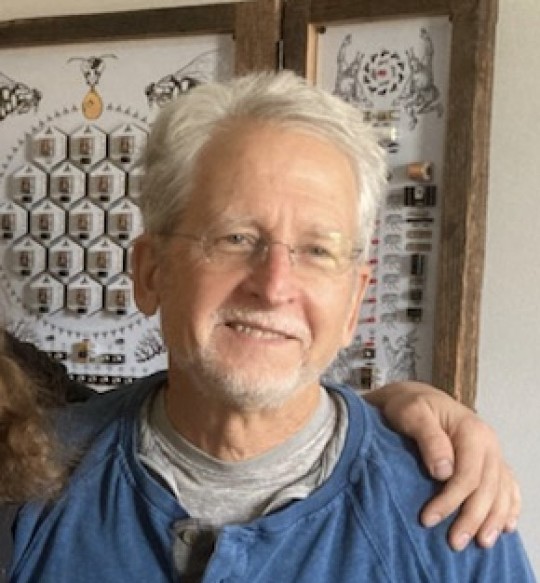
Thursday, 30 November 2023, 12 pm ET (US & Canada)
Online Zoom Lecture
70 Years of Wa/ondering: The Pylos Ta series and Mycenaean Ceremonies
TOM PALAIMA (Department of Classics & Program in Aegean Scripts and Prehistory, University of Texas at Austin)
The thirteen tablets of the Ta series at Pylos are arguably the most informative set of documents pertaining to paraphernalia used in ceremonies and rituals in the Linear B corpus.
The contents of the Ta tablets are diverse and significant for research in Aegean cultural history. There are a. clearly drawn ideograms of ceremonial vessels along with phonetic renderings of their names: pouring vases, receptacle vases, ritual heirloom tripods; b. references to the materials used to construct and decorate pieces of furniture; c. descriptions of abstract or figural motifs of decoration; d. observations on the state of repair of specific objects; e. likely identification of the region of manufacture of particular items (ke-re-si-jo); f. entries referring to implements connected with sacrificial actions (pa-sa-ro, wa-o and qi-si-pe-e) and equipment to use with fire (au-te, pu-ra-u-to-ro, -qa-ra-to-ro and e-ka-ra); g. inlaid tables (whether slaughtering tables or banqueting tables is now under discussion) with varying numbers of ‘feet’; h. throne and stool ‘sets’, other stools.
All this rich and detailed, if occasionally tantalizingly opaque, information was registered as the results of an inspection inventory involving a person named pu2-ke-qi-ri, whose status as an elite functionary, perhaps even a collector, is undebatable, although whether he is the actual tablet-writer of the Ta series and other important tablets that are identified as the work of Hand 2 is still being discussed.
Moreover, the header line for the Ta set specifies that the records were written on the occasion when the king (wa-na-ka) did something important (te-ke) with regards to an individual named au-ke-wa and the significant office of da-mo-ko-ro. What he did is in my view no longer a settled matter nor should it ever have been thought to be.
There are also other important socio-political terms embedded in the descriptions of individual items: for example, wa-na-se-wi-ja and a-mo-te-wi-ja.
I have myself turned to this series periodically since I wrote 49 years ago, as an advocatus diaboli, my M.A. thesis in fall semester 1974 trying to prove to myself and Emmett L. Bennett, Jr., that the tablet writer of the Ta series really was not Hand 2, but Hand 1, the master record-maker, whom Hand 2 closely resembles.
What I will do here today is give a reading of these texts that demonstrates how problematical it is (1) to address critical questions relating to their interpretation looking for either-or solutions; and (2) to keep the forest in mind when studying the roots, bark, branches and leaves of the trees and vice versa.
For seventy years now, the full Ta series of thirteen tablets (discovered in the 1952 excavation season at Pylos) has hardly ever not been under discussion. However, the last five years have seen a veritable renaissance. Behold:
Pierini, Bernabé, Ercoles (eds) 2021. THRONOS: Historical Grammar of Furniture in Mycenaean and Beyond.
Morton, J., N. Blackwell and K. Mahoney 2023. “Sacrificial Ritual and the Palace of Nestor: A Reanalysis of the Ta Tablets,” AJA 127.2, 167–187
Palaima, T.G. and N.G. Blackwell 2020. “Pylos Ta 716 and Mycenaean Ritual Paraphernalia: A Reconsideration,” SMEA NS 6, 67–95.
Blackwell, N.G. and T.G. Palaima 2021. “Further Discussion of pa-sa-ro on Pylos Ta 716: Insights from the Ayia Triada Sarcophagus,” SMEA NS 7, 21–37.
Perna, M. and R. Zucca 2021. “Il ta-ra-nu nel Mediterraneo antico,” in THRONOS, 97–104.
Petrakis, V. 2020. “Mycenaean thórnoi, Homeric θρόνοι: Textual Perspectives,” in L. Nosch, D. Brostowsky Gilboa (eds) The Ancient Throne: The Mediterranean, Near East, and Beyond, from the 3rd Millennium BCE to the 14th Century CE, 61–84.
Pierini, R. 2021. “Mycenaean Wood: Re-thinking the Function of Furniture in the Pylos Ta Tablets within Bronze Age Sacrificial Practices,” in THRONOS, 107–135.
Piquero, J. 2021. The Tables of the Pylos Ta Series: Text and Context, in THRONOS, 43–53
Díez Platas, F. 2021. “Imagining Chairs: Models and Representations of Mycenaean thronoi,” in THRONOS, 75–88.
Aura Jorro, F. 2021. Las interpretaciones de la serie Ta de Pilo en su context,” in THRONOS, 7–30.
Bernabé, A. 2021 How to Describe Things? Depictions of Tables on Mycenaean Tablets and in Present Day Furniture Catalogues, in THRONOS, 55–64.
Varias, C. 2016 “Testi relativi a mobilio e vasi pregiati,” in M. Del Freo, M. Perna (eds) Manuale di epigrafia micenea. Vol. 2: 551–563.
Murphy, J.M.A., S. R. Stocker, J. L Davis and L.A. Schepartz 2020. “Late Bronze Age Tombs at the Palace of Nestor at Pylos,” in J. M. A. Murphy (ed.) Death in Late Bronze Age Greece, 26–44.
Palaima, T.G. 2021. “Mycenaean *a-mo-te-u, Greek ἁρμόζω, and the Ideology of Joining,” MASt@chs Harvard Center for Hellenic Studies February 5, 2021. https://classical-inquiries.chs.harvard.edu/mastchs-winter-2021-seminar/ §§1–13.
Palaima, T.G. Forthcoming. “Historical Reflections on the Pylos Ta Series: Putting te-ke in Its Place,” in J. Bennet, A. Karnava and T. Meißner (eds) KO-RO-NO-WESA: 2021. Rethymno: School of Philosophy, University of Crete.
Zoom participation is limited to 300 people and registration is required. To register, please click here.
0 notes
Link
0 notes